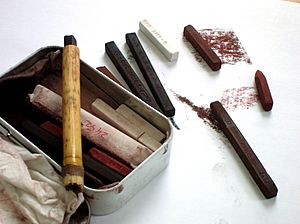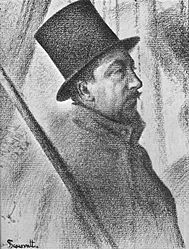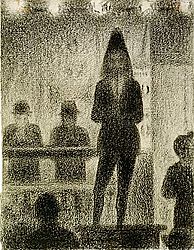Conté facts for kids
Conté crayons, also known as Conté sticks, are unique drawing tools. They are made from pressed powder, like graphite (pencil lead) or charcoal, mixed with a special clay. These drawing sticks are usually square-shaped.
Contents
How Conté Crayons Were Invented
Conté crayons were invented in 1795 by a clever person named Nicolas-Jacques Conté. He came up with this idea during a time called the Napoleonic Wars. Back then, it was hard to get graphite because of a naval blockade. This blockade stopped ships from bringing goods into France.
So, Conté found a way to mix clay with the little graphite they had. This made a new drawing tool that was cheaper to make. It was also easy to control how hard or soft the crayons were.
What Are Conté Crayons Made Of?
Today, Conté crayons are made using natural colors called pigments. These can be iron oxides (which give earthy colors), carbon black, or titanium dioxide (for white). They are mixed with kaolin clay and a special binder (like a glue) to hold everything together.
You can find Conté crayons in many colors. The most common ones are black, white, and sanguine (a reddish-brown color). They also come in bistre (a yellowish-brown), different shades of grey, and other colors too.
How Artists Use Conté Crayons
Artists use Conté crayons in many ways. Color sets are great for drawing outdoors or for studying different colors. Some artists even create whole paintings with them, using them like soft pastels.
Conté crayons are also often used to sketch under pastel paintings. They can create the first layers before an artist adds dry pastels. You can layer different colors of Conté crayons to make new shades or darker tones. They mix well on paper, often better than some other hard pastels.
These crayons work best on rough paper that can hold the color well. Artists can also use them on specially prepared canvases. This is for making an underdrawing, which is a first sketch for a painting. Conté crayons are hard and have sharp, square edges. This makes them perfect for detailed drawings with fine lines. They are different from soft pastels, which are better for bold, wide strokes.
Georges Seurat and Conté Crayons
In the 1880s, a famous artist named Georges Seurat used Conté crayons a lot. He created many of his studies and sketches with them.
-
Portrait of Paul Signac
-
Trombone player, a study for Circus Sideshow
See also
 In Spanish: Lápiz conté para niños
In Spanish: Lápiz conté para niños





